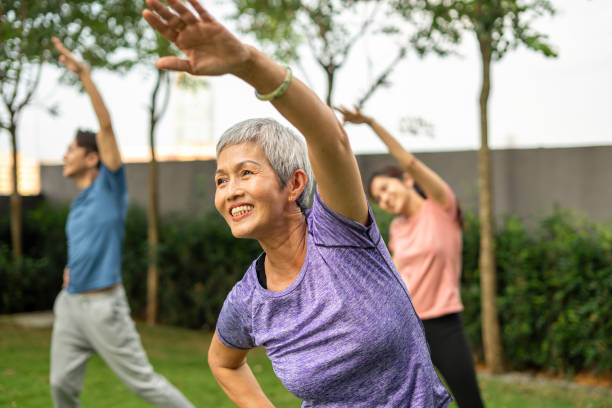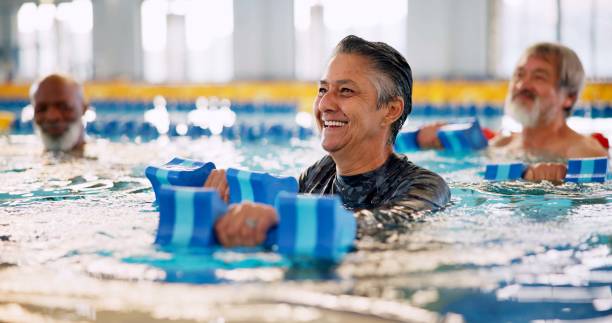As we age, our bodies begin to reflect the years of wear and tear—especially in our back, shoulders, and hips. For many seniors, chronic back pain and poor posture are daily hurdles that can affect independence, mood, and overall quality of life. The good news? With the right exercises, it’s possible not just to alleviate discomfort but to rebuild strength, stability, and confidence in every step.
Contents
- 1 Understanding Why Posture Declines with Age
- 2 The Role of Movement in Pain Relief and Postural Support
- 3 Gentle Stretches That Open and Align the Body
- 4 Strengthening Exercises to Support Upright Alignment
- 5 Balance Work to Reinforce Stability
- 6 Making It a Safe and Sustainable Routine
- 7 Moving Toward a Pain-Free Future
Understanding Why Posture Declines with Age
Posture isn’t just about how we look when we stand—it’s a key indicator of spinal health. Over time, muscles that support the spine may weaken, joints may stiffen, and habits like slouching can set in. Add to that conditions like osteoporosis or arthritis, and it’s no surprise that many older adults report frequent back pain or a noticeable stoop in their posture.
But this decline isn’t inevitable. Targeted movement can retrain the body, reinforce muscle groups that tend to weaken with age, and reduce pressure on the spine.
The Role of Movement in Pain Relief and Postural Support
One of the most effective non-invasive ways to combat these issues is exercise. But not just any exercise—gentle, intentional routines designed to improve mobility, activate deep postural muscles, and reduce stiffness.
Consistency is key. Just 15–30 minutes a day of posture-enhancing and back-strengthening movements can make a profound difference over time.
Let’s explore a few categories of exercises that have proven especially beneficial for seniors.
Gentle Stretches That Open and Align the Body

Stiffness in the chest, shoulders, and hip flexors often pulls the body forward, contributing to a hunched posture. Countering that with simple stretches can help realign the spine and reduce strain.
1. Chest Opener (Standing or Seated)
Clasp your hands behind your back, straighten your arms, and gently lift your chest while pulling your shoulders back. Hold for 15–20 seconds. This stretch encourages an upright posture and relieves tightness across the front of the shoulders.
2. Cat-Cow Stretch (Seated or On All Fours)
This dynamic movement—alternating between arching and rounding the spine—gently mobilizes the back. It’s excellent for improving flexibility and spinal awareness.
3. Neck Stretch with Side Tilt
Tilt your head to one side, bringing your ear toward your shoulder without raising your shoulder. Hold and repeat on the other side. This helps relieve neck stiffness that can lead to forward-head posture.
Strengthening Exercises to Support Upright Alignment
The foundation of good posture lies in strong, active muscles. These exercises help target key areas like the core, glutes, and mid-back—all essential to keeping the spine supported and upright.
1. Seated Row with Resistance Band
Wrap a resistance band around your feet while seated. Pull the band toward your waist while squeezing your shoulder blades together. This activates the mid-back, a region often neglected but crucial for good posture.
2. Wall Angels
Stand with your back, shoulders, and head against a wall. Slowly raise your arms like a snow angel, maintaining contact with the wall. This strengthens postural muscles and increases shoulder mobility.
3. Pelvic Tilts
Lying on your back with knees bent, gently tilt your pelvis to flatten your lower back against the floor, then release. This small movement strengthens the deep core muscles and can reduce lower back strain.
Balance Work to Reinforce Stability
Poor posture and back pain often go hand-in-hand with reduced balance. By integrating stability exercises, seniors can build confidence and reduce the risk of falls—another major contributor to spinal injuries.
1. Heel-to-Toe Walk
Walking in a straight line with the heel of one foot touching the toe of the other challenges balance and posture at the same time.
2. Standing Leg Lifts
Holding onto a sturdy chair, slowly lift one leg to the side without tilting your torso. This improves core engagement and hip strength, both of which are important for staying upright.
3. Seated Marching
While seated, lift one knee at a time as if marching in place. This activates the hip flexors and reinforces spinal alignment without putting pressure on the lower back.
Making It a Safe and Sustainable Routine
Before beginning any new fitness regimen, seniors should consult with their healthcare provider—especially if they have chronic pain or a diagnosed condition like osteoporosis. It’s also wise to:
- Start slow and increase intensity gradually.
- Use supportive surfaces like yoga mats or chairs.
- Listen to your body and stop if pain arises.
- Focus on breath and alignment, not just movement.
For best results, aim for a mix of stretching, strengthening, and balance exercises at least three to five times a week. Even short, 10-minute sessions can be powerful when done consistently.
Moving Toward a Pain-Free Future
Posture and pain aren’t fixed traits—they’re dynamic, and they respond to how we move and care for our bodies. For seniors, reclaiming strength through exercise isn’t just about comfort—it’s about independence, dignity, and the ability to move through the world with ease.
Whether it starts with a few stretches in the morning or a daily walk around the block, every effort adds up. With dedication and the right movements, standing tall—and pain-free—is entirely within reach.
